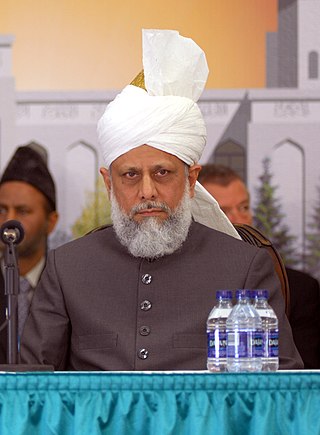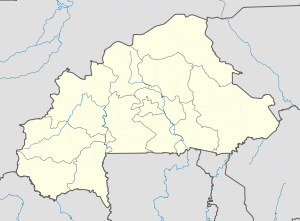
Islam was the first Abrahamic monotheistic religion to arrive in Ghana. Today, it is the second most widely professed religion in the country behind Christianity. Its presence in Ghana dates back to the 10th century. According to the Ghana Statistical Service's Population and Housing census (2021), the percentage of Muslims in Ghana is about 19.9%.

Islam was the first Abrahamic monotheistic religion to arrive in Ivory Coast. Today, it is the most widely professed religion in the country, representing 60 percent of the total population.
The Wangara are a subgroup of the Soninke who later became assimilated merchant classes that specialized in both Trans Saharan and Secret Trade of Gold Dust. Their diaspora operated all throughout West Africa Sahel-Sudan. Fostering regionally organized trade networks and Architecture projects. But based in the many Sahelian and Niger-Volta-Sene-Gambia river city-states. Particularly Dia, Timbuktu, Agadez, Kano, Gao, Koumbi Saleh, Guidimaka, Salaga, Kong, Bussa, Bissa, Kankan, Jallon, Djenné as well as Bambouk, Bure, Lobi, and Bono State goldfields and Borgu. They also were practicing Muslims with a clerical social class (Karamogo), Timbuktu Alumni political advisors, Sufi Mystic healers and individual leaders (Marabout). Living by a philosophy of merchantile pacifism called the Suwarian Tradition. Teaching peaceful coexistence with non-Muslims, reserving Jihad for self-defence only and even serving as Soothsayers or a "priesthood" of literate messengers for non-Muslim Chiefdoms/Kingdoms. This gave them a degree of control and immense wealth in lands where they were the minority. Creating contacts with almost all West African religious denominations. A group of Mande traders, loosely associated with the Kingdoms of the Sahel region and other West African Empires. Such as Ghana, Mali, Songhai, Yorubaland, Bono State, Kong, Borgu, Dendi, Macina, Hausa Kingdoms & the Pashalik of Timbuktu. Wangara also describes any land south of Timbuktu and Agadez. The Bilad-Al-Sudan or Bilad-Al-Tibr, "Land of Black" or "Gold."

Islam in Burkina Faso has a long and varied history. According to the 2010 census, the population of the country is 63.2% Muslim.

Mirza Masroor Ahmad is the current and fifth leader of the Ahmadiyya Muslim Community. His official title within the movement is Fifth Caliph of the Messiah. He was elected on 22 April 2003, three days after the death of his predecessor Mirza Tahir Ahmad.

Solomon Islands is an overwhelmingly Christian majority country, with adherents of Islam being a minuscule minority. Because of the secular nature of the country's constitution, Muslims are free to proselytize and build places of worship in the country. Islam first entered the country in 1987, when a Ghanaian missionary belonging to the Ahmadiyya movement visited Guadalcanal on a reconnaissance trip lasting three years. Today, there are two major Islamic branches in the country, the Ahmadiyya Muslim Community and Sunni Islam. According to a 2007 report by the United States Department of State's International Religious Freedom Report, there are approximately 350 Muslims in the country. However, the Australian Journal of International Affairs suggests that there may be as many as 1,000 Ahmadiyya in the country alone, or 0.14% of the population.

Upper Volta was a colony of French West Africa established in 1919 in the territory occupied by present-day Burkina Faso. It was formed from territories that had been part of the colonies of Upper Senegal and Niger and the Côte d'Ivoire. The colony was dissolved on 5 September 1932, with parts being administered by the Côte d'Ivoire, French Sudan and the Colony of Niger.

Burkina Faso is a religiously diverse society, with Islam being the dominant religion. According to the latest 2019 census, 63.8% of the population adheres to Islam. Around 26.3% of the population practices Christianity, 9.0% follow Animism/Folk Religion, and that 0.9% are unaffiliated or follow other faiths.

Islam is a minority religion in the island nation Tuvalu. With the introduction of Ahmadiyya Islam in 1985 by Ahmadi Muslims, there are approximately 50 Ahmadi Muslims in the country, of which all are members of the Ahmadiyya movement. Due to the country's small population of 10,679, this represents 0.46% of Tuvalu. The Tuvalu Mosque, in Funafuti, the capital of Tuvalu, is the only mosque in the country.

Ahmadiyya, officially the Ahmadiyya Muslim Community or the Ahmadiyya Muslim Jama'at, is an Islamic revival or messianic movement originating in Punjab, British India, in the late 19th century. It was founded by Mirza Ghulam Ahmad (1835–1908), who claimed to have been divinely appointed as both the Promised Mahdi and Messiah expected by Muslims to appear towards the end times and bring about, by peaceful means, the final triumph of Islam; as well as to embody, in this capacity, the expected eschatological figure of other major religious traditions. Adherents of the Ahmadiyya—a term adopted expressly in reference to Muhammad's alternative name Aḥmad—are known as Ahmadi Muslims or simply Ahmadis.

Jalsa Salana is the formal, annual gathering of the Ahmadiyya Muslim Community initiated by Mirza Ghulam Ahmad, founder of the community who claimed to be the Promised Messiah and Mahdi of the end days. Usually, the gathering spans over three days, beginning on Friday after the Friday Sermon. Typically, the flag hoisting ceremony is used to identify its commencement. Although there is a central, international Jalsa attended by Ahmadis from across the world, many of the countries hold their own national jalsa, sometimes attended by the Khalifatul Masih.

Jāmi’ah al-Ahmadīyyah is an International Islamic seminary and educational institute with campuses in Pakistan, United Kingdom, India, Ghana, Canada, Germany, Nigeria, Indonesia, Bangladesh, Malaysia, Tanzania, Sri Lanka, Sierra Leone, and Kenya. In addition, there are affiliated Mu'alameen centers in Pakistan and Madagascar. Founded in 1906 as a Section in Madrassa Talim ul Islam by Mirza Ghulam Ahmad of Qadian, the founder of the Ahmadiyya Muslim Community, it is the main centre of the Ahmadiyya Muslim Community for Islamic learning.

The Ahmadiyya Muslim Community is the second-largest sect of Islam in Sierra Leone, behind only Sunni Islam. The earliest history of the Community in Sierra Leone dates back to the early period of the Second Caliphate, when at least six people are said to have conveyed their adherence to the faith. The sect attained rapid growth in the country after the 1937 arrival of Nazir Ahmad Ali, the first permanent Ahmadi missionary in Sierra Leone. Recent estimates by Ahmadi community suggest that there are approximately 560,000 Ahmadi Muslims in Sierra Leone, which is about 9% of the country's total population. Sierra Leone has the largest percentage of Ahmadi Muslims by share of total population in the world.

Ahmadiyya is an Islamic religious movement originating in 1889 in northern India around the teachings of Mirza Ghulam Ahmad (1835–1908), who claimed to have been divinely appointed as both the promised Mahdi and Messiah expected by Muslims to appear towards the end times.

Ahmadiyya is an Islamic branch in Spain, under the spiritual leadership of the caliph in London. The earliest history of the Community in Spain dates back to the period of the Second Caliph, when Malik Mohammad Sharid Gujrati, a missionary of the Community, arrived in Madrid on March 10, 1936. However, in the same year the Spanish Civil War broke out forcing Gujrati to abandon the country. Missionary efforts commenced once again following the Second World War, in 1946 when Karam Ilahi Zafar was sent by the caliph. The Basharat Mosque in Pedro Abad, built by the Ahmadiyya in the 1980s is the first mosque to be built in Spain since the Fall of Granada and the end of Muslim rule at the end of the 15th century. Today there are two purpose-built Ahmadi Muslim mosques and roughly 500 adherents in Spain.

Ahmadiyya in The Gambia is part of the worldwide Ahmadiyya Muslim Jama'at under the leadership of the Ahmadiyya Caliphate. Ahmadiyya teachings entered Gambia during the era of the Second Caliphate through the flow of Ahmadiyya literature and a number of traders returning to the country. The first missionary to enter the country was Alhaji Hamza Sanyaolo, a Nigerian who entered in 1959. After a number of months he was followed by Gibriel Saeed, a Ghanaian missionary. Since its earliest history in the Gambia, the community has been facing resistance and religious intolerance from certain Muslim clerics and Islamic bodies in the country.

Ahmadiyya is an Islam branch in Ghana, under the spiritual leadership of the caliph in London. The early rise of the Community in Ghana can be traced through a sequence of events beginning roughly at the same time as the establishment of the worldwide Community in 1889 in British India. It was during the early period of the Second Caliphate that the first missionary, Abdul Rahim Nayyar was sent to what was then the Gold Coast in 1921 upon invitation from Muslims in Saltpond. Having established the Ahmadiyya movement in the country, Nayyar left and was replaced by the first permanent missionary, Al Hajj Fadl-ul-Rahman Hakim in 1922.

Ahmadiyya is an Islamic community in Guinea-Bissau, under the leadership of the caliph in London. First established in the country in 1995, during the era of the Fourth Caliphate, the Community represents an estimated 2% of the country's Muslim population, corresponding to approximately 13,000 people.

Ahmadiyya is an Islamic movement in Australia, first formally founded in the country in the 1980s, during the era of the fourth caliph. However, the history of the Community dates back to the early 20th century, during the lifetime of the founder of the movement, Mirza Ghulam Ahmad, with the first contacts arising as a consequence of Australians travelling to British India, and also as a consequence of early, "Afghan" camel drivers settling in Australia during the mid to late 19th century. Today there are at least four Ahmadi mosques in four of the six Australian states, representing an estimated 6,000-8,000 Australian Ahmadis in the country.










